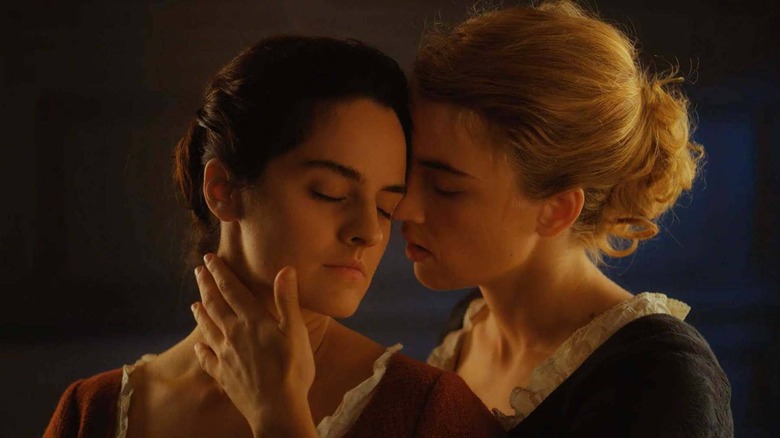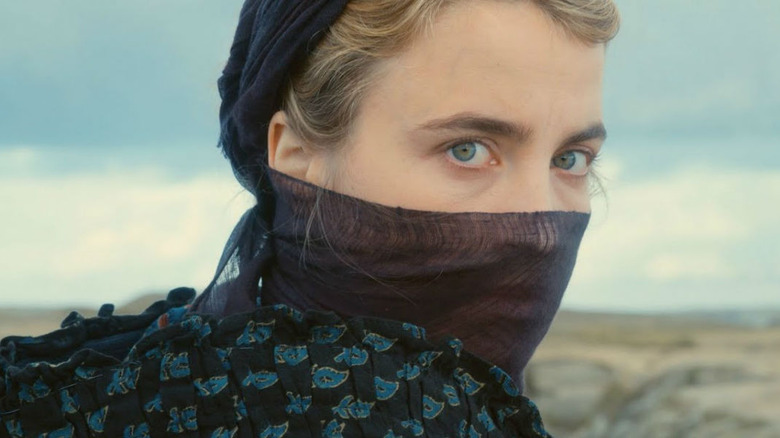Portrait Of A Lady On Fire Is Gay
(Welcome to Movies Are Gay, a Pride Month series where we explore the intentional, or accidental, ways LGBTQIA+ themes, characters, and creatives have shaped cinema.)
Celine Sciamma's 2019 romance "Portrait of a Lady on Fire" is a gorgeous and wonderful work of art, a love story so intense and beautiful that when it was released straight to the Criterion Collection, most critics merely nodded in approval. It felt right. There also didn't seem to be many complaints when the film was elected as the thirtieth greatest film of all time on the Sight & Sound 2022 poll.
"Portrait of a Lady on Fire" follows two women who are essentially left alone on an island together. There are no men here. When women gather, it's to perform impromptu a cappella numbers on a cliff at night, bonding around a fire, and reveling in feminine energy. Late in the film, a mansion house servant becomes pregnant and the two lead characters, Héloïse (Adèle Haenel) and Marianne (Noémie Merlant), can only think to help her arrange an abortion. Men are a problem, love between women is the solution. Like a notable Twitter meme, men is too headache.
The story is simple. Marianne, a skilled painter, has come to a small remote island to paint the portrait of the young noblewoman Héloïse. The portrait will be used to present Héloïse to a potential, off-screen suitor, a fate she loathes. In order to bond and get the job done, Marianne and Héloïse take long walks on the beach and spend great spans of the day staring at each other in an art studio. Marianne finds she is falling in love with Héloïse. Héloïse reveals that, in staring back at her portrait painter, has also fallen in love.
The world falls away. Their love is the only thing that remains.
The truth of love
Love, art, and beauty. That is the truth of "Portrait of a Lady on Fire." It's also an act of defiance. Eventually, both women realize that their romantic idyll must come to an end. The tidal wave of heteronormativity is fast approaching and a decision must be made. Sadly, in late-18th-century France, the two women are not in a position to run away together and live in connubial bliss in perpetuity. Héloïse, for practical reasons, must marry her suitor, have children, and live a life of dutiful uxorious servitude. Marianne, already an artist, can at least flee into her paintings. At the end of the film, Marianna looks at Héloïse one last time, separated across a great opera hall. Staring and loving her is all she has in that moment. "Portrait of a Lady on Fire" is a glorious film about longing.
2019 also saw the release of a film called "The Lighthouse," a similar movie in many ways. "The Lighthouse" also took place on a remote, isolated island, populated by only two characters. The two men of "The Lighthouse," however, aren't concerned with art as they are with their job tending the titular edifice. When left to their own devices, the two men accumulate filth and gastrointestinal distress. They start to hate each other and at least one of them ends the movie with a mouth full of dirt.
When women gather on an island, they find the divine in their love and in their feminine energy. When men gather, they fart and kill.
Both are excellent films, but "Portrait" is a queer romance for the ages. It is a high watermark in contemporary queer cinema.

